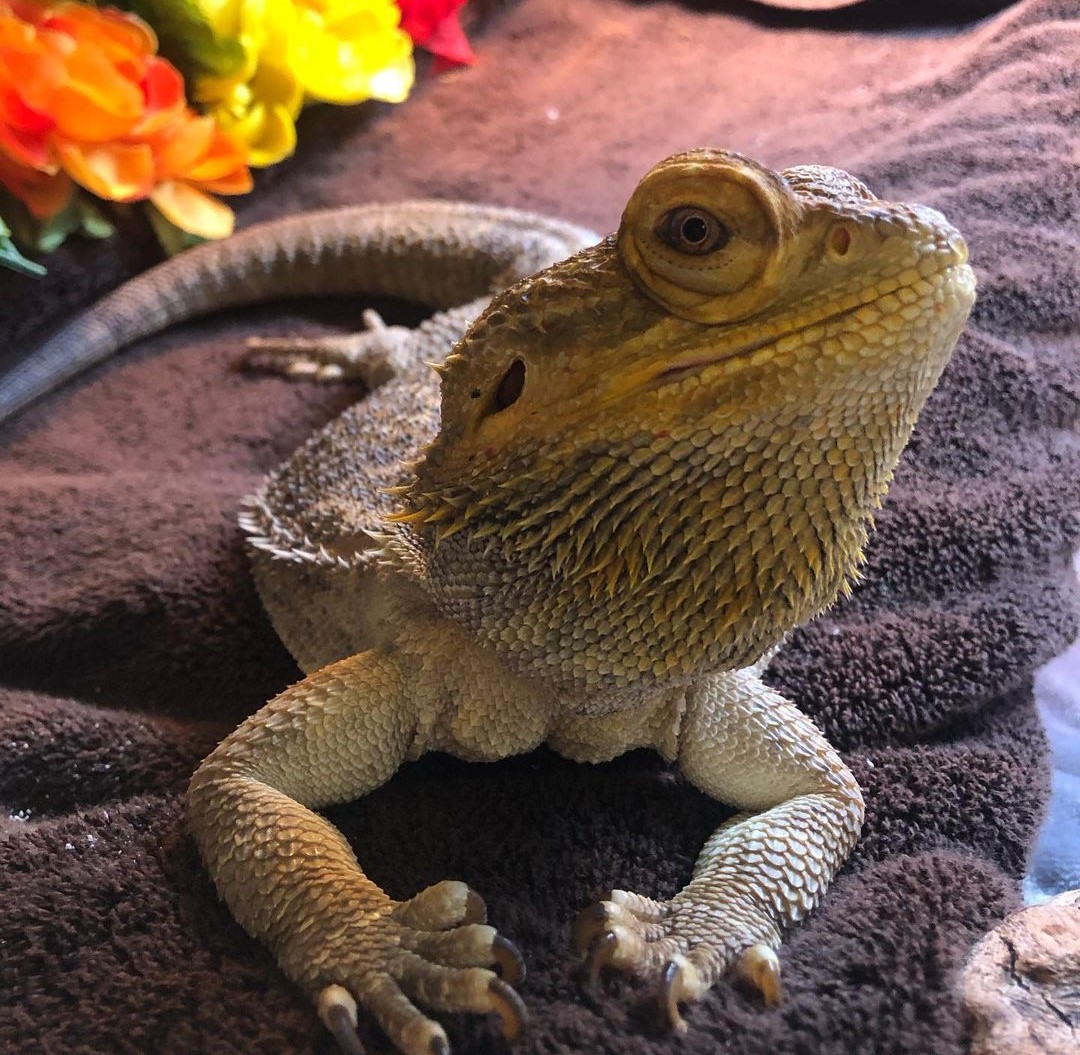Understanding the mystery of stress marks in your beloved bearded dragon, often referred to as ‘stress marks bearded dragon,’ is essential for their well-being. These fascinating reptiles have unique ways of expressing emotions, and by understanding and addressing stress marks, we can ensure they live happy and healthy lives.
You hold the key to a stress-free life for your scaly friend. It starts with recognizing and rectifying improper handling, inadequate environmental conditions, and nutrition imbalances. You’ll be boosting their overall health and creating a harmonious habitat.
So, get ready to uncover the causes of stress marks in your bearded dragon and discover preventive measures to transform your bearded dragon’s life. Let’s get into this journey together!
Table of Contents
What Are Bearded Dragon Stress Marks?
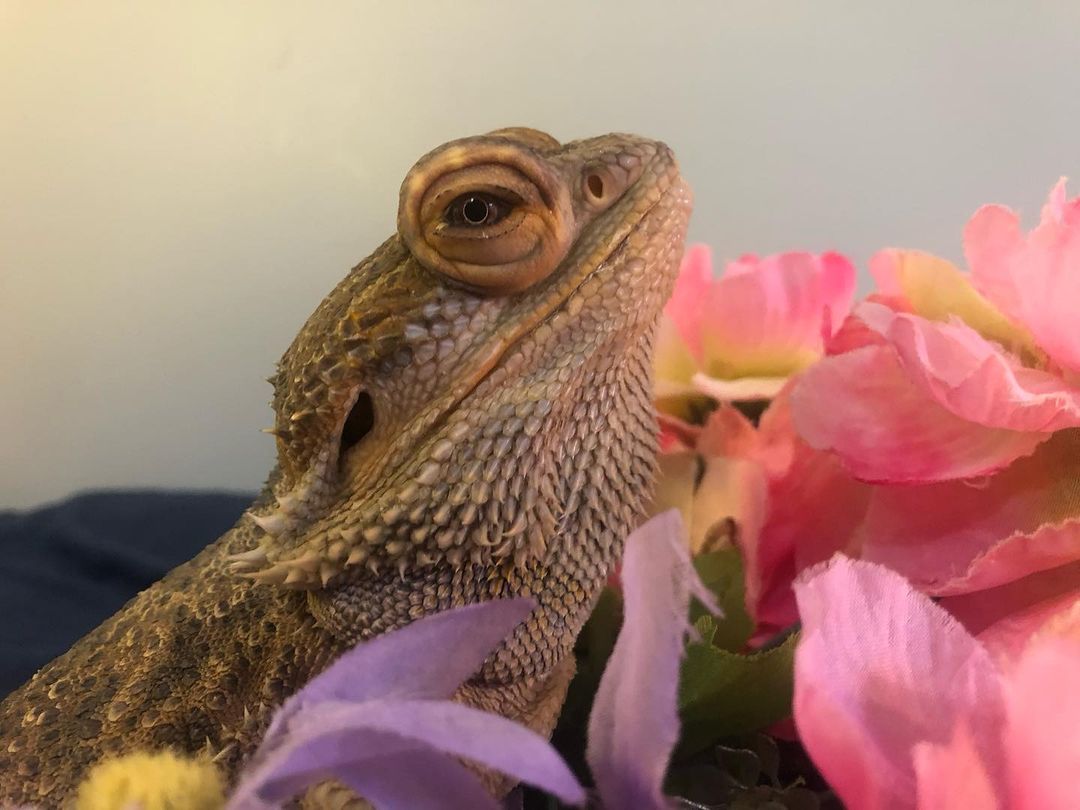
Bearded dragon stress marks, those darkened lines or spots on their belly, indicate discomfort or distress. Though not harmful, they point to underlying issues that need attention. Understanding and addressing these stress marks is vital for proper bearded dragon care.
Let’s dive into the details.
One of the most common bearded dragon stress marks is black spots, which can appear:
- Along the belly
- On the chin
- On the underside
These black spots directly respond to environmental, health, or emotional stressors that the dragon may experience. They can indicate that the dragon feels threatened, requires a more suitable habitat, needs a proper diet, or is experiencing illnesses or injuries.
Remember, these black spots are temporary and respond to specific stressors. Once the underlying cause of stress is identified and resolved, the black spots will fade away, allowing your stress bearded dragon to return to its usual vibrant appearance.
How Long Do Stress Marks Stay on Bearded Dragons?
Like black spots, bearded dragon stress marks don’t follow a strict timeline. Stress marks in bearded dragons occur immediately in response to a stressful situation and usually fade once the stress is resolved. Their persistence varies depending on the nature and intensity of the stress.
If the stress is due to an environmental issue, like improper temperature or lighting, the marks might disappear once you fix this issue. This could take a few hours to a few days.
But, if the stress is due to a health problem, the marks may persist until the dragon is completely healed. This might take several weeks or even months.
In essence, the length of time the stress marks stay on your bearded dragon is a crucial indicator of the severity of the problem. Longer persistence of stress marks is usually a sign that your pet needs help.
Causes Of Stress Marks In Bearded Dragons
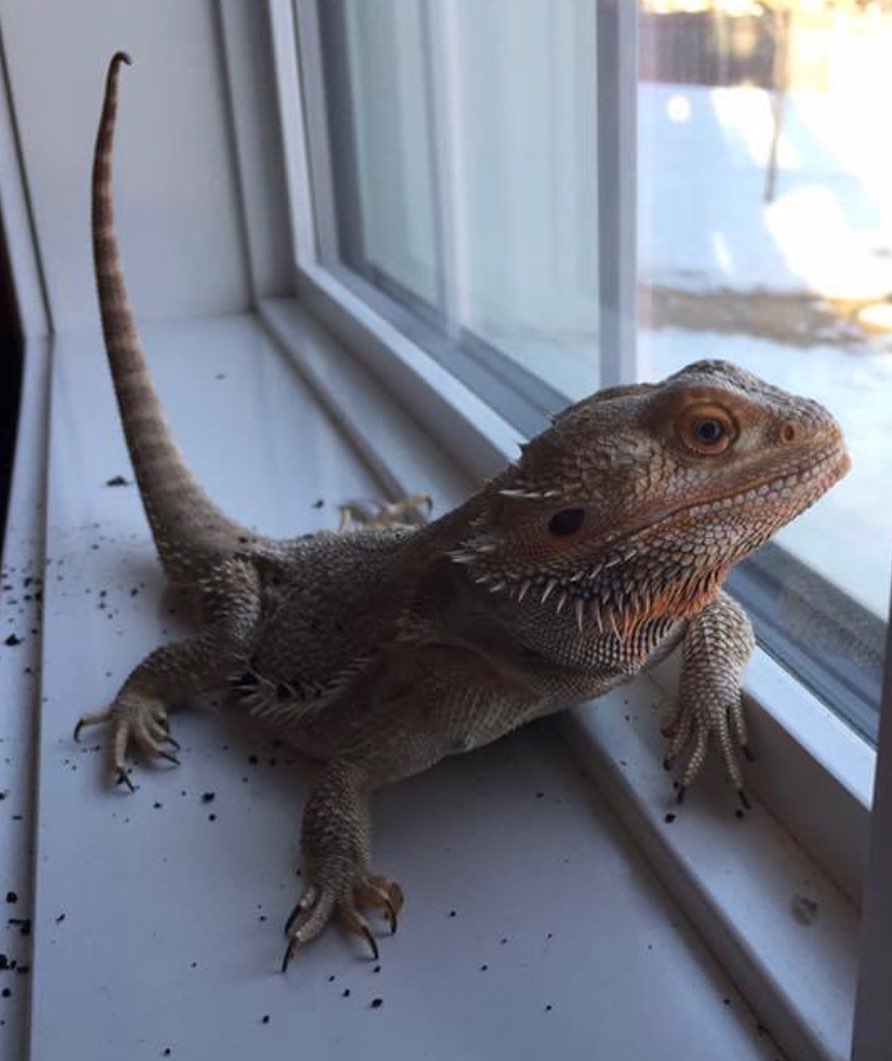
Stress marks in bearded dragons can stem from various causes. Let’s dive into the key ones to understand them better and ensure a stress-free life for your pet.
Habitat Conditions
Habitat conditions play a significant role in your bearded dragon’s well-being. Issues like incorrect temperatures, inappropriate humidity levels, or small enclosure sizes can all induce stress, leading to visible marks.
Researching and mimicking their natural environment as closely as possible is important.
Improper Handling
Proper handling is crucial for the well-being of bearded dragons. Rough or excessive handling can cause stress and contribute to the appearance of stress marks.
You must approach your dragon with gentleness and care, allowing them to become comfortable with your touch gradually. This helps establish a positive association and minimizes stress during handling interactions.
Territorial Conflicts
Bearded dragons can show territorial behavior when housed in the same enclosure. Territorial conflicts can arise, leading to heightened stress levels and stress marks.
Providing each dragon with enough space and resources to avoid conflicts and promote a harmonious environment is essential. Observation and monitoring of their behavior can help identify signs of territorial disputes, allowing for appropriate intervention to reduce stress levels.
Inconsistent or Poor Diet
A balanced, varied diet is crucial for a bearded dragon’s health. If their diet is inconsistent, poor, or lacks variety, it could result in nutritional deficiencies, leading to stress marks. Ensure they get a balanced mix of vegetables, insects, and occasional fruit.
Environmental Stressors: Lights and Loud Noises
Bearded dragons are highly sensitive to their environment, and certain factors can contribute to their stress levels. Bright lights and loud noises can stress out dragons.
It’s important to put its home in a calm spot and use the right kind of lighting that imitates its natural surroundings to make your bearded dragon feel comfortable.
Inadequate Rest and Sleep
Like any other living creature, bearded dragons need proper rest and sleep. Regular disturbances during their sleep can cause significant stress. It’s important to create a quiet environment for them in their habitat.
This will provide a shady space where they can retreat and rest peacefully without any interruptions.
Breeding or Mating Season
During breeding or mating season, bearded dragons may experience increased stress levels. Stress marks observed during these periods are often a normal response to hormonal changes.
But, it’s essential to check them closely for any signs of excessive stress and provide a calm and secure environment to reduce potential anxiety.
Lack of General Care
Proper care and attention to a bearded dragon’s basic needs are essential in maintaining its well-being and minimizing stress. Ignoring tasks such as regularly cleaning their enclosure, ensuring a fresh water supply, and addressing their general needs can increase stress levels.
You can create a healthier and more pleasing environment for your bearded dragons by focusing on care factors.
Health Issues
Illness or injury can be significant sources of stress for bearded dragons. If you observe stress marks alongside other signs of ill health, it is crucial to seek professional veterinary advice as soon as possible.
A qualified reptile veterinarian can diagnose and treat any underlying health issues, providing the necessary care and support to relieve stress and promote recovery.
Travel or Transport
Moving or traveling can be a stress-inducing experience for bearded dragons, causing stress marks to appear. It’s best to reduce travel and, when necessary, make their travel enclosure as comfortable as possible.
Understanding the causes of bearded dragon stress marks is the first step in preventing them. Your bearded dragon can lead a happy, stress-free life by ensuring a suitable environment and offering proper care.
Preventing Stress Marks in Bearded Dragons
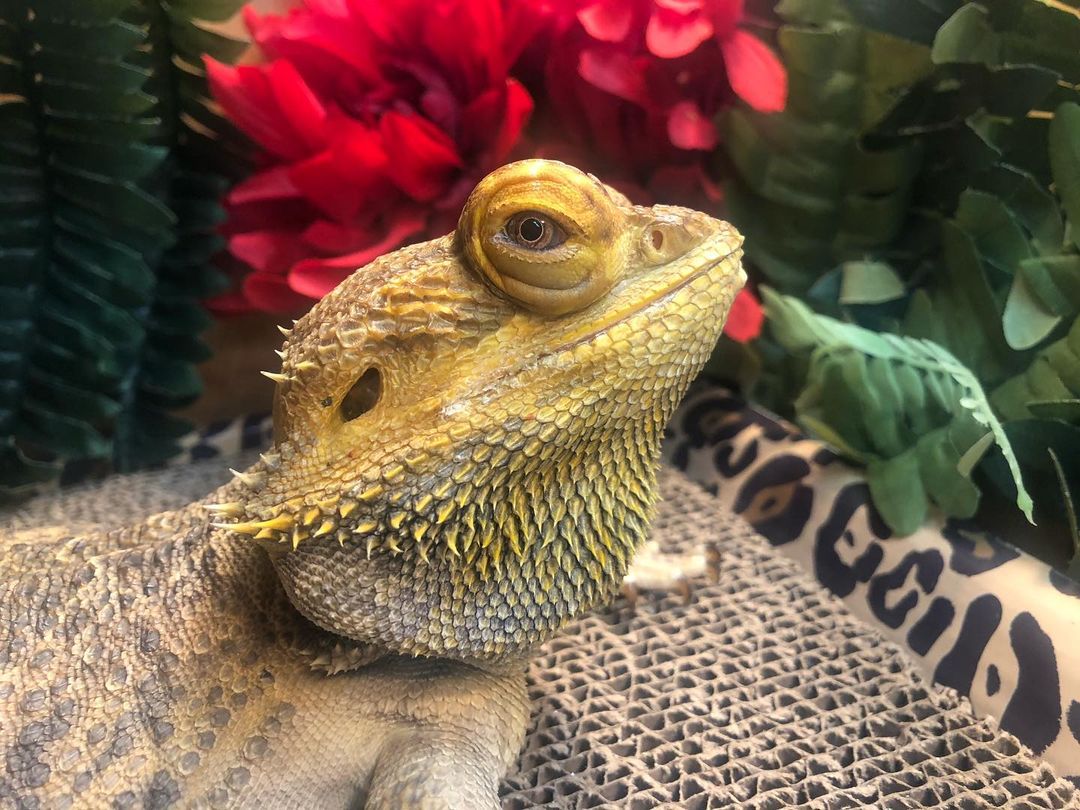
Preventing stress marks in bearded dragons revolves around creating a secure, comfortable environment. Here, we’ll share some strategies to help reduce the chances of these markings.
Create a Calm Environment
A quiet, peaceful environment can significantly reduce stress. Loud noises or frequent disruptions can agitate your dragon. Choose a quiet location for their enclosure away from high-traffic areas.
Monitor and Regulate the Environment
A bearded dragon’s habitat depends on temperature and humidity. Regularly check to ensure the temperature stays within an acceptable range. Also, keep an eye on humidity levels. Unbalanced conditions could lead to stress marks on your bearded dragon.
Provide Enough Light, Heat, and UV Exposure
Light, heat, and UV exposure are key for your dragon’s health. With them, your pet may become relaxed. Provide a UVB light and a heat lamp in the enclosure to mimic natural sunlight. Ensure they have a cooler side to retreat to if needed.
Feed a Balanced Diet
A healthy diet can prevent stress and stress marks. Feed your dragon a balanced diet of greens, insects, and occasional fruits. Varied nutrition contributes to well-being, reducing chances of stress-related issues.
Provide Sufficient Space
Space is a key consideration in reducing stress in bearded dragons. A cramped enclosure could result in stress marks. A spacious environment allows for exploration and movement, contributing to mental and physical health.
Reduce Stressful Situations
Reducing exposure to stressors is beneficial in preventing stress marks. Limit handling until your dragon is accustomed to you. Try to maintain a consistent routine during change or disruption to avoid stress.
Preventing stress marks in your bearded dragon is achievable with mindful care. By providing an optimal environment, a nutritious diet, and a stress-free life, your dragon can thrive, free from stress marks.
Calming and Soothing Techniques for Stressed-Bearded Dragons
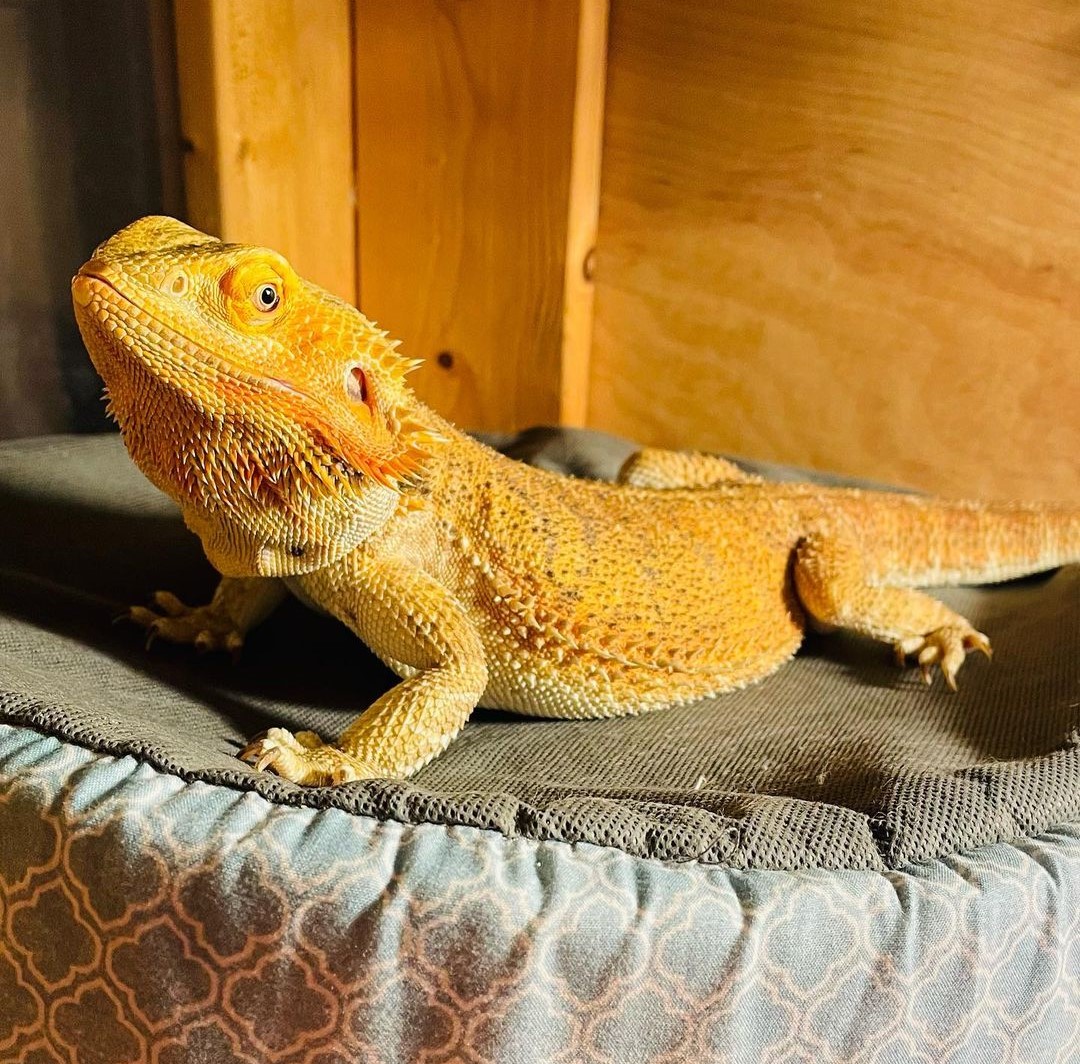
When you notice stress marks on your bearded dragon, it’s crucial to address the situation promptly and help your dragon relax. Here are some effective calming techniques that can soothe a stressed bearded dragon.
Gentle Massage
A gentle massage can work wonders in calming a stressed bearded dragon. Using your fingers, softly stroke the dragon’s back, avoiding the sensitive belly area. The aim is to provide gentle touch and reassurance without applying excessive pressure or causing discomfort.
Warm Baths
A warm bath can be incredibly relaxing for a stressed bearded dragon. Ensure the water temperature is comfortable and not too deep. Supervise your dragon closely during bath time to ensure its safety and comfort. Baths are particularly beneficial for dragons that may be dehydrated.
Aromatherapy
Although not commonly explored, some reptile owners have found reptile-friendly aromatherapy to help reduce stress in their dragons. However, it’s essential to consult with a veterinarian before introducing any new substances into your dragon’s environment to ensure their safety and well-being.
Minimize Handling and Interactions
Minimizing handling and interactions can provide much-needed downtime for a stressed bearded dragon. This is especially important for newly acquired dragons who need time to acclimate to their new environment.
Gradually increase interactions as the dragon grows more comfortable and relaxed.
Provide Visual Stimulation
Engaging your bearded dragon with visual stimulation can help distract them from stressors. Consider placing their enclosure in a location with exciting views, such as where they can watch fish swimming or observe a slow-moving ceiling fan. Visual stimuli help keep their attention focused on something positive.
Inevitable Option: Calling a Vet
If you have tried the above calming techniques and your bearded dragon continues to show signs of stress, it is advisable to consult a reptile veterinarian. Persistent stress marks could indicate an underlying health issue requiring professional evaluation and treatment.
A veterinarian can provide tailored advice and guidance based on your dragon’s needs, ensuring their well-being and addressing potential health concerns. The sight of stress marks on a bearded dragon can be unsettling, but remember; stress is a normal response to certain situations.
The key is to monitor and address it promptly, ensuring your dragon’s overall well-being. These calming techniques can play an essential role in helping your dragon feel secure and stress-free.
Conclusion
Ensuring your bearded dragon’s well-being means addressing those fascinating stress marks. They’re like secret codes telling you how your pet feels. From habitat tweaks to proper handling, understanding the causes can make a world of difference for your scaly friend.
Prevention is key! Creating a stress-free zone with a comfy environment and minimizing triggers can keep those marks at bay. And if stress persists, pamper your dragon with gentle massages and relaxation techniques. But remember, if the marks persist, it’s time to consult a vet.
Happy dragons are stress-free dragons, so keep an eye on those signals and keep the good vibes flowing!
FAQs
What are some calming techniques for a stressed bearded dragon?
Calming techniques include warm baths, gentle massages, visual stimulation, and minimizing handling. If these techniques do not help and the stress marks persist, it’s advisable to consult a vet.
Are there specific seasons when bearded dragons are more prone to stress?
Bearded dragons may experience increased stress during their brumation period (a form of hibernation) or breeding season due to hormonal changes and altered routines. Environmental changes, like the transition between seasons, might also cause stress.
Are younger bearded dragons more prone to stress marks than older ones?
Younger bearded dragons can be more sensitive to environmental changes and potentially more prone to stress marks. But, regardless of age, any bearded dragon can show stress marks when exposed to stressors.
Alina Hartley is a small-town girl with a ginormous love of bearded dragons. It all started with Winchester, a baby bearded who was abandoned at the shelter by his former owners because of a birth defect that caused one front leg to be shorter than the other. Alina originally went to the shelter looking for a guinea pig, but one look at Winchester and it was love at first sight. From that day on, Alina has dedicated her life to learning everything she can about bearded dragons. She loves helping new beardie parents start their incredible journey with these magnificent reptiles.
Follow her on:
LINKEDIN
TWITTER.
Read her latest articles HERE
Learn more about her HERE.

